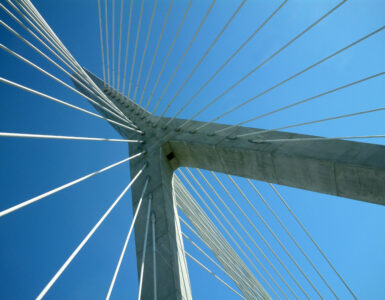In the modern digital era, data is the foundation of every firm. Enterprises constantly seek methods to improve their data warehousing strategies to provide the business with faster, more accurate, and newer insights. A new platform that has changed the way data is managed, stored, and analyzed is the SAP Datasphere (formerly known as SAP Data Warehouse Cloud). Enterprises may create a modern SAP-centric data warehouse with the SAP Datasphere that offers real-time insights for better decision-making by utilizing the power of cloud computing.
Today, many businesses are limited by their existing technologies and conventional data warehousing applications. Those on SAP BW have created custom and valuable content specific to their organizations over multiple years. Recreating this content in a new environment would require extensive up-front effort. Integrating current data warehouses with the cloud-based data warehouse platform is challenging for many enterprises.
For those fortunate enough to be on SAP BW, aspiring to modernize, the new BW Bridge for SAP Datasphere may be the answer. SAP has provided well-defined processes to guide the migration from SAP BW or SAP BW/4 HANA system to the SAP BW Bridge. We had the recent opportunity to perform a migration using the SAP BW Bridge for SAP Datasphere and want to provide lessons learned.
First, there are two migration options:
- Shell conversion: For metadata transfer. The data will be loaded from source systems directly after migration.
- Remote conversion: For metadata along with actual data transfer. For this migration method, a delta cloning technique should be enabled in the source systems if the customer decides to run the original and target system in parallel.
In this blog, we will focus on the shell conversion method and share valuable lessons learned migrating BW/4 HANA models into SAP BW Bridge. The shell conversion method will work on SAP BW 7.3 to 7.51 SAP_BW release and in BW/4 HANA 2021. If the current version of the sender system is BW/4 HANA 1.0 or 2.0, it must be upgraded to BW/4 HANA 2021 before using shell migration.

Source (all images): SAP
Know before you go
Before migrating from SAP BW or SAP BW/4 HANA system to the SAP BW Bridge, review a few prerequisites:
- An active SAP BW Bridge tenant in SAP Datasphere
- An SAP Datasphere tenant with enough space to store and manage the data from the models that the SAP BW Bridge will expose
- An established cloud connector for Remote Function Calls (RFC) connection between the sender (SAP BW or BW/4 HANA) and the receiver (SAP BW Bridge) systems
- A Communication system and Arrangement in the SAP BW Bridge tenant with the user for inbound communications
- Establishing an RFC connection in the sender system using the defined user for inbound communications
- Updating SAP Bridge Transfer Cockpit by running the SAP BW note analyzer with recent sender and receiver systems XML files
- Creating a software component, ABAP package, and transport requests with the user defined in the Communication Arrangement
- Creating ODP (Operational Data Provisioning) source systems (ODP-BW, ODP-SAP, ODP-CDS, and ODP-SLT) in the SAP BW Bridge using the BW modeling tool in Eclipse/HANA studio.
- Releasing the data sources for data provisioning using the Operational Data Provisioning Framework
Shell conversion
SAP provides a predefined job list for the precheck and actual migration of the BW objects into SAP BW Bridge, much like the shell conversion to the BW/4 HANA system. Check the system for any incompatible objects before beginning the conversion. Run precheck and custom code translation to ensure that all the objects will be operational following the conversion into the target system. To get a list of items to be reviewed and considered from both a business and technical perspective, consult the simplification list supplied by SAP, along with Note 3154420.
SAP BW Bridge transfer cockpit can be accessed through code RSB4HCONV or using the task list SAP_BW4_TRANSFER_CLOUD_SHELL from STC01. During the scope definition, specify the objects to be transferred, pick and choose from the collected dependent objects, assign the target system (defined in the sender system), and select the transport request (created with the user in communication arrangement).
The conversion assigns the package and transport request for the recipient system rather than the local sender system, which is a significant distinction from the BW/4 HANA migration. Following these steps, the chosen models would be imported into SAP BW Bridge.
SAP BW Bridge modeling
The Eclipse BW modeling tool and the SAP BW Bridge cockpit are the two main tools for SAP BW Bridge. The SAP BW Bridge uses these tools to manage and maintain the migrated objects from the original/sender system and to load data directly from the ODP source systems. We can also use the preconfigured SAP BW Bridge objects that are a part of the SAP BW Bridge content, which can be installed from the content explorer view in the Eclipse BWMT in addition to the migrated objects.
Below are some issues and limitations observed during the BW Bridge migration and within SAP BW Bridge modeling capabilities:
- Error in Remote Function Call during scope transfer. A communication arrangement needs to be created with the “SAP_COM_0691” scenario ID in the SAP BW Bridge cockpit:


- SAP BW Bridge transport was not available to assign in the sender system during the scope definition task in the BW Bridge transfer cockpit. The Communication user used to create the Communication arrangement should exist in the transport requests.


- Custom codes using ABAP statements that are not compatible with the cloud version fail during conversion. The old, custom code statement needs to be replaced with ABAP Language Version 5 (Cloud)

- No direct access to SAP GUI in the SAP BW Bridge
- Only ODP source systems are supported
- Variable selection criteria are not supported in DTPs
- BEx queries are not supported, since there is no support for the OLAP engine or any functionalities dependent on the OLAP engine, like analysis authorizations, and query execution. Therefore, after migration, the queries cannot be found directly in SAP BW Bridge; instead, BEx queries should be imported as entities in the SAP Datasphere, SAP BW Bridge Space. After importing as entities, the query information will be available in Databuilder and Businessbuilder as a perspective. Refer to the SAP help documentation on import entities from SAP BW Bridge for more details.
For more information on restrictions for SAP Datasphere, SAP BW bridge, please refer to SAP Note 3117800.
SAP BW Bridge Space in SAP Datasphere
The migrated or new SAP BW objects from the SAP BW Bridge could be imported as remote tables using the specific SAP BW Bridge space in SAP Datasphere. The remote tables can then be shared to more spaces so that extra SAP Datasphere objects can be created and made available to the data consumption layer via the data builder of the SAP BW Bridge Space.
Based on their existing data warehousing processes and future roadmap into cloud-based systems, customers have a variety of target scenarios for SAP BW Bridge to choose from. Either they migrate their current SAP BW data warehouse to the cloud with the expectation that they will keep the data and data flows in place, or they adopt a hybrid approach with on-premise BW or BW/4 HANA and partially move the data flows into SAP Datasphere with the intention of gradually adapting to contemporary cloud data ingestion approaches.
The SAP BW Bridge for Datasphere is an essential tool for enterprises looking to integrate their on-premises data warehousing solutions with cloud-based data warehousing solutions. Organizations can get real-time data replication, cost savings, simple connectivity, and greater scalability by using this connector which helps businesses succeed in the digital age by enabling them to make better-informed decisions.
Read the results of our new Global IT Executive Survey: The Innovation vs. Technical Debt Tug-of-War.
To learn more about our SAP consulting services, contact us.





Add comment